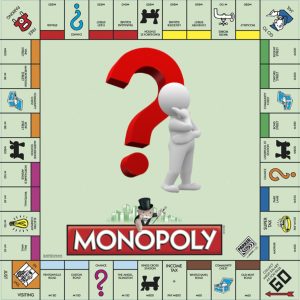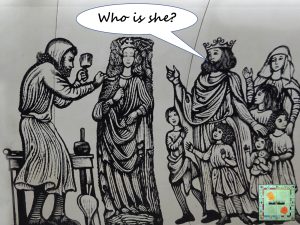 Almost everyone has played Monopoly at sometime or other in their life as it is such a popular and well known game, but where did it all begin? Arts Society Lecturer, Photographer and current President of the Surrey Photographic Society Roger Mendham took us on a journey around the origins of this game and the named places on the board.
Almost everyone has played Monopoly at sometime or other in their life as it is such a popular and well known game, but where did it all begin? Arts Society Lecturer, Photographer and current President of the Surrey Photographic Society Roger Mendham took us on a journey around the origins of this game and the named places on the board.
Originally known as “The Landlord’s Game” with 22 properties, 4 stations and electricity and water franchises – it was very similar to the one we know today and was created by Lizzie Magie in 1903 and patented by her in 1924 in the USA. After playing the game, an out of work salesman, Charles Darrow, created his own version on a round board and began selling it privately as “Monopoly”. He soon returned to the square board and when the publishers Parker Bros got interested, sold the rights to them. Parker Bros, on discovering that Lizzie Magie was the true creator, then had to buy the rights from her, which they did for just $500!
In 1935 Waddington Games bought the UK & Commonwealth rights. They based the game on streets and stations in London and Roger Mendham proceeded to take us on a photographic tour of each of the streets and explained the reasons each one was chosen for the Monopoly game – which are far from random. For instance the Old Kent Road referenced the song of the same name, popular at the time. Whitechapel was infamous for Jack the Ripper, Bow Street, was the location of the first Police Force headquarters of the “Bow Street Runners”. The four railways stations were all stations that belonged to the LNER – the London and North Eastern Railway before they were nationalized in 1948. No.186 Fleet Street was the location of Sweeney Todd, the “Deamon Barber of Fleet Street”. Pall Mall was based on the game “pelle-melle” – a cross between golf and croquet, the court for which was located next to St James’s Park and was also the location of the first National Art Gallery in 1824.
 Whitehall was where Charles the 1st was executed. Malborough Street was the location of the shop “Philip Morris Co”, who first sold “Malboro” cigarettes (manufactured in the USA). It was also the location of the well-known Malborough Street Magistrates Court. Trafalgar Square was where the famous Lions designed by Sir Edwin Landseer were to be found around Nelson’s Column. Leicester Square had the statue of William Shakespeare and was also the centre for the theatre land of London. Piccadilly was the location of the Royal Academy of Art and also where Fortnum and Mason’s was to be found and who were the first shop to sell “Heinz Bake Beans” in the UK.
Whitehall was where Charles the 1st was executed. Malborough Street was the location of the shop “Philip Morris Co”, who first sold “Malboro” cigarettes (manufactured in the USA). It was also the location of the well-known Malborough Street Magistrates Court. Trafalgar Square was where the famous Lions designed by Sir Edwin Landseer were to be found around Nelson’s Column. Leicester Square had the statue of William Shakespeare and was also the centre for the theatre land of London. Piccadilly was the location of the Royal Academy of Art and also where Fortnum and Mason’s was to be found and who were the first shop to sell “Heinz Bake Beans” in the UK.
Super Tax was put next to Mayfair and Park Lane – home to elegant, expensive hotels to the rich and famous. While The “Community Chest” was similar to the Food Banks we have today and of course we all take a “Chance” in life!
It was a fascinating and informative tour and we came away feeling that we knew and understood the game a whole lot better!
Liz Beecheno
